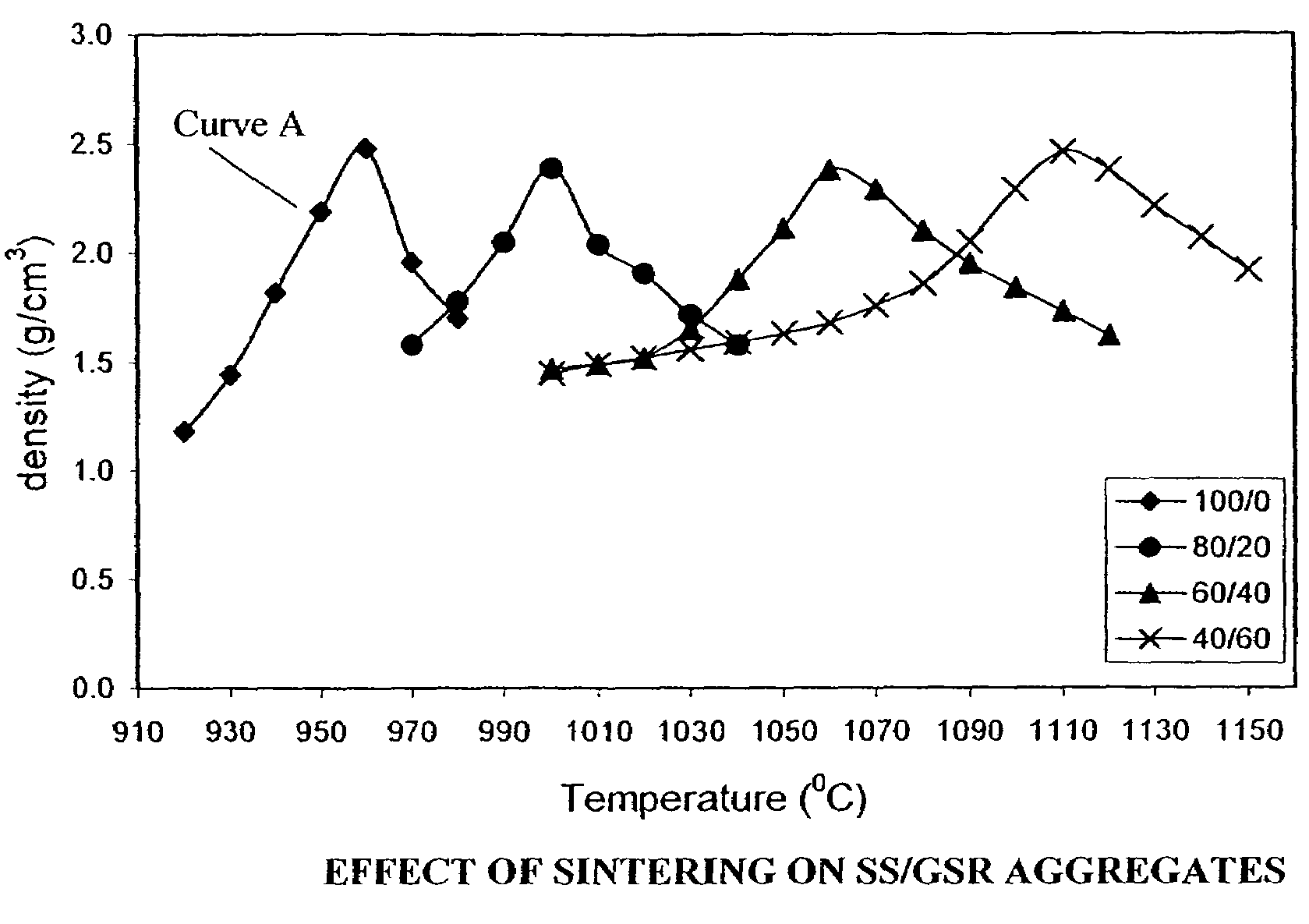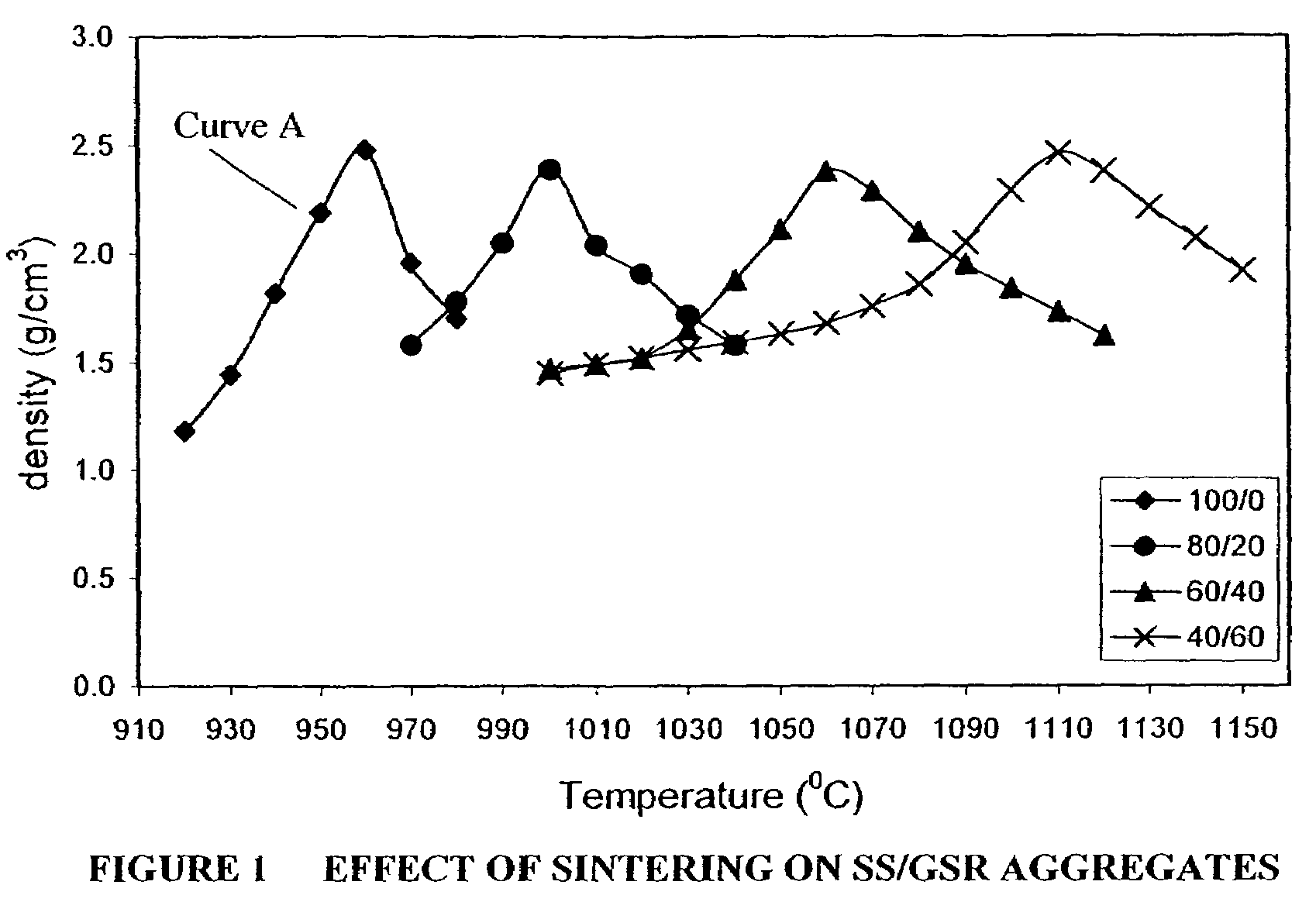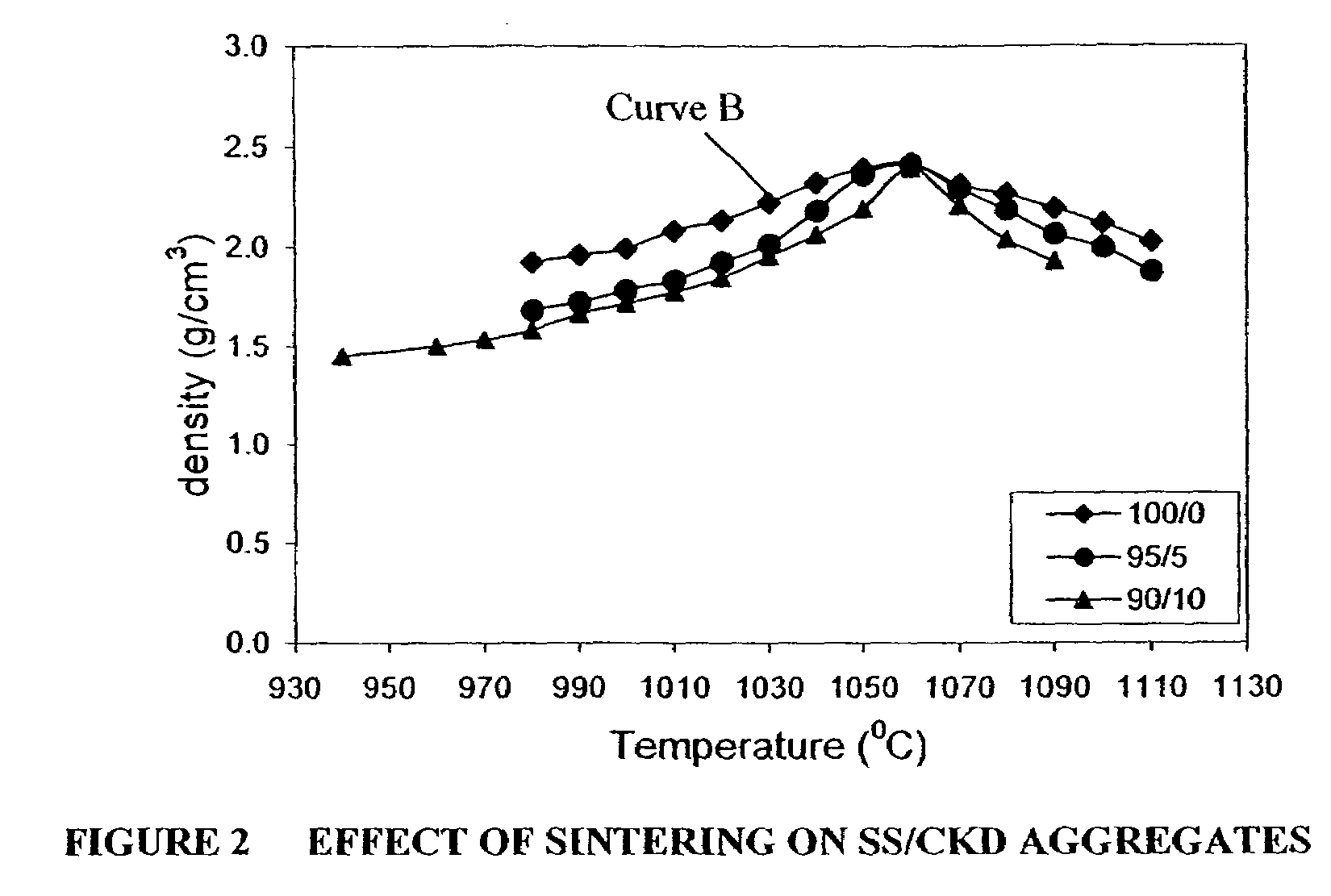Synthetic aggregates comprising sewage sludge and other waste materials and methods for producing such aggregates
a technology of sewage sludge and other waste materials, applied in the field of synthetic aggregates, can solve the problems of complex processing of these materials, limited aggregate resources, and expansion of materials, and achieve the effect of reducing the demand for non-renewable raw materials
- Summary
- Abstract
- Description
- Claims
- Application Information
AI Technical Summary
Benefits of technology
Problems solved by technology
Method used
Image
Examples
example 1
[0099]In this example, synthetic aggregates were produced comprising sewage sludge (“SS”) and waste glass (“WG”). The average chemical compositions (major oxides) of the three different SS samples used in this example are given in Table A, below. Table B, below, shows the minor and trace constituents present in the three samples. Sample X and Sample Y were obtained from the same facility about six months apart, while Sample Z was obtained from a second facility. The calcium oxide content of Sample X is 20.28% by dry weight; the calcium oxide content of Sample Y is 12.12% by weight; and the calcium oxide content of Sample Z is 3.20% by dry weight. Samples X and Y are considered to be high calcium SS and Sample Z is low calcium SS. The average chemical composition of WG used is also shown in Table A. The WG was made from soda-lime glass, which accounts for about 90% of the glass produced in the United States. It consists mainly of silicon dioxide (71.7% by dry weight), sodium oxide (1...
example 2
[0122]In this example, synthetic aggregates were made comprising high calcium SS Samples X and Y and granite sawing residues (“GSR”), which is a Group B, LCSAM (2.61% calcium oxide (CaO)). The average chemical compositions of the SS samples and the GSR used in these experiments are shown in Table F, below. The same equipment used in Example 1 was used here.
[0123]
TABLE FCHEMICAL ANALYSIS OF SS AND GSRWeight (%)ConstituentSS (Sample X)SS (Sample Y)GSRSiO216.0231.2465.17Al2O36.836.2214.75Fe2O32.356.336.28CaO20.2812.122.61MgO3.002.250.32Na2O0.300.582.02K2O0.590.324.22
[0124]SS Samples X and Y and GSR were subjected to processing described above and shown in FIG. 6. GSR passing through a 250 mesh sieve (63 microns) was added to dried sludge powder before the mix was pelletized and pyroprocessed.
[0125]The GSR powder, sieved to less than 63 microns, was added to SS powder in selected proportions of 100% / 0%, 80% / 20%, 60% / 40% and 40% / 60% (SS / GSR). Water was added to the mixture (up to 35% by ...
example 3
[0136]In this example, pyroprocessed aggregates were made comprising Sample Y SS, moderately high calcium SS (calcium oxide (CaO) of 12.12%), and slate, which is a LCSAM (calcium oxide (CaO) 1.82%). The average chemical analyses of Sample Y SS, and slate, which were used in these experiments, are shown in Table I, below. Sewage sludge Sample Y was used in these experiments. The same equipment used in Example 1 is used here.
[0137]
TABLE ICHEMICAL ANALYSIS OF SS AND SLATE (wt %)Sewage SludgeConstituentSlateSample YSiO258.3231.24Al2O328.546.22Fe2O37.236.33CaO1.8212.12MgO3.672.25Na2O1.450.58K2O0.880.32TiO20.020.41
[0138]The slate was subjected to processing as described in FIG. 6 and in more detail in the previous Examples.
[0139]Sewage sludge was dried at 110° C. for 24 hours before the solid cake being ground to fine powder. Slate was added to the sewage sludge powder in selected proportions of 100% / 0%, 80% / 20%, 60% / 40% and 40% / 60% (SS / slate). Water was added to the mixture (up to 45% by...
PUM
| Property | Measurement | Unit |
|---|---|---|
| relative density | aaaaa | aaaaa |
| density | aaaaa | aaaaa |
| density | aaaaa | aaaaa |
Abstract
Description
Claims
Application Information
 Login to View More
Login to View More - R&D
- Intellectual Property
- Life Sciences
- Materials
- Tech Scout
- Unparalleled Data Quality
- Higher Quality Content
- 60% Fewer Hallucinations
Browse by: Latest US Patents, China's latest patents, Technical Efficacy Thesaurus, Application Domain, Technology Topic, Popular Technical Reports.
© 2025 PatSnap. All rights reserved.Legal|Privacy policy|Modern Slavery Act Transparency Statement|Sitemap|About US| Contact US: help@patsnap.com



